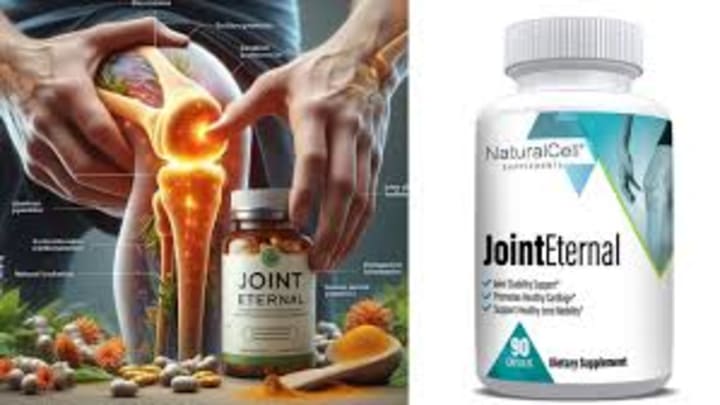Understanding Menopause Joint Pain: Causes, Symptoms, and Management
Menopause is a natural phase in a woman’s life.

Menopause is a natural phase in a woman’s life. It marks the end of her reproductive years. This transition comes with various changes in the body. One common yet often overlooked symptom is joint pain. Understanding menopause joint pain can help women manage it better and improve their quality of life.
What is Menopause?
Menopause usually occurs in women between the ages of 45 and 55. It is defined as the time when a woman has not had a menstrual period for 12 consecutive months. The time leading up to menopause is called perimenopause. During this phase, a woman's hormone levels, particularly estrogen and progesterone, start to fluctuate and eventually decline.

Why Does Menopause Cause Joint Pain?
Hormones play a crucial role in maintaining joint and bone health. Estrogen, in particular, has anti-inflammatory properties. It helps to keep joints lubricated and cushions the bones. When estrogen levels drop during menopause, women may experience increased inflammation and less lubrication in their joints. This can lead to stiffness, swelling, and pain.
Common Joints Affected
Menopause joint pain can affect various parts of the body. However, some joints are more commonly affected than others:
Knees: The knees bear a significant amount of body weight. They are often one of the first joints to show signs of pain and discomfort.
Hips: The hip joints are crucial for mobility and are also prone to pain during menopause.
Hands and Fingers: Many women report stiffness and pain in their hands and fingers, which can affect daily activities.
Shoulders and Neck: Pain in the shoulders and neck can also occur, making it hard to perform simple tasks.
Symptoms of Menopause Joint Pain
Menopause joint pain can manifest in various ways. Some common symptoms include:
Stiffness: Joints may feel stiff, especially after periods of inactivity, such as sleeping or sitting.
Swelling: Joints may appear swollen and may be tender to touch.
Aching or Throbbing: A constant, dull ache or throbbing pain is a common symptom.
Limited Range of Motion: Pain and stiffness can limit how much you can move the affected joint.
Warmth and Redness: Some joints may feel warm and look red due to inflammation.
Other Factors Contributing to Joint Pain
While hormonal changes are a primary cause, other factors can contribute to joint pain during menopause:
Aging: As we age, the wear and tear on our joints increase, making them more susceptible to pain.
Weight Gain: Menopause can lead to weight gain, putting additional stress on weight-bearing joints like the knees and hips.
Osteoarthritis: This condition, which involves the breakdown of cartilage in the joints, is more common in postmenopausal women.
Managing Menopause Joint Pain
While menopause joint pain can be challenging, several strategies can help manage it effectively:
1. Healthy Diet
Eating a balanced diet can help reduce inflammation and maintain healthy joints. Include plenty of fruits, vegetables, whole grains, and lean proteins in your diet. Omega-3 fatty acids, found in fish like salmon and mackerel, have anti-inflammatory properties. Incorporate nuts and seeds, which are also good sources of healthy fats.
2. Regular Exercise
Staying active is crucial for joint health. Exercise helps keep joints flexible and strengthens the muscles around them, providing better support. Low-impact exercises like walking, swimming, and cycling are excellent choices. Yoga and Pilates can also improve flexibility and reduce stiffness.
3. Maintaining a Healthy Weight
Keeping your weight in check can significantly reduce the stress on your joints. Even a small amount of weight loss can make a big difference in reducing pain and improving mobility.
4. Hydration
Drinking enough water is essential for maintaining the lubrication in your joints. Aim to drink at least eight glasses of water a day.
5. Supplements
Certain supplements can help manage menopause joint pain. Calcium and vitamin D are essential for bone health. Omega-3 supplements can help reduce inflammation. Glucosamine and chondroitin are often used to support joint health. Always consult with a healthcare provider before starting any new supplements.
6. Pain Relief Medications
Over-the-counter pain relievers like ibuprofen and acetaminophen can help manage pain and inflammation. In some cases, a doctor may prescribe stronger medications or recommend topical creams for localized relief.
7. Physical Therapy
A physical therapist can create a personalized exercise plan to strengthen the muscles around the joints and improve flexibility. They can also teach techniques to protect your joints during daily activities.
8. Hot and Cold Therapy
Applying heat to stiff joints can help relax the muscles and increase blood flow. Cold therapy can reduce inflammation and numb sharp pain. Alternating between hot and cold treatments can be particularly effective.

9. Stress Management
Stress can exacerbate pain. Practice stress-reducing techniques like deep breathing, meditation, and mindfulness. Ensuring you get enough rest and sleep is also crucial for managing pain.
When to See a Doctor
While menopause joint pain is common, it’s essential to consult a healthcare provider if:
The pain is severe or persistent.
There is significant swelling, warmth, or redness around the joint.
You have difficulty moving the joint or performing daily activities.
Over-the-counter medications do not provide relief.
A doctor can help determine if the pain is related to menopause or another condition, such as arthritis, and recommend appropriate treatments.
Conclusion
Menopause joint pain is a common but manageable symptom of the transition. Understanding the causes and symptoms can help women take proactive steps to manage their pain. A combination of a healthy diet, regular exercise, maintaining a healthy weight, and other management strategies can significantly improve joint health. If the pain persists, seeking medical advice is crucial to ensure appropriate treatment and care. By taking these steps, women can navigate menopause with less discomfort and more confidence.
Click For More Details
About the Creator
Enjoyed the story? Support the Creator.
Subscribe for free to receive all their stories in your feed. You could also pledge your support or give them a one-off tip, letting them know you appreciate their work.





Comments
There are no comments for this story
Be the first to respond and start the conversation.